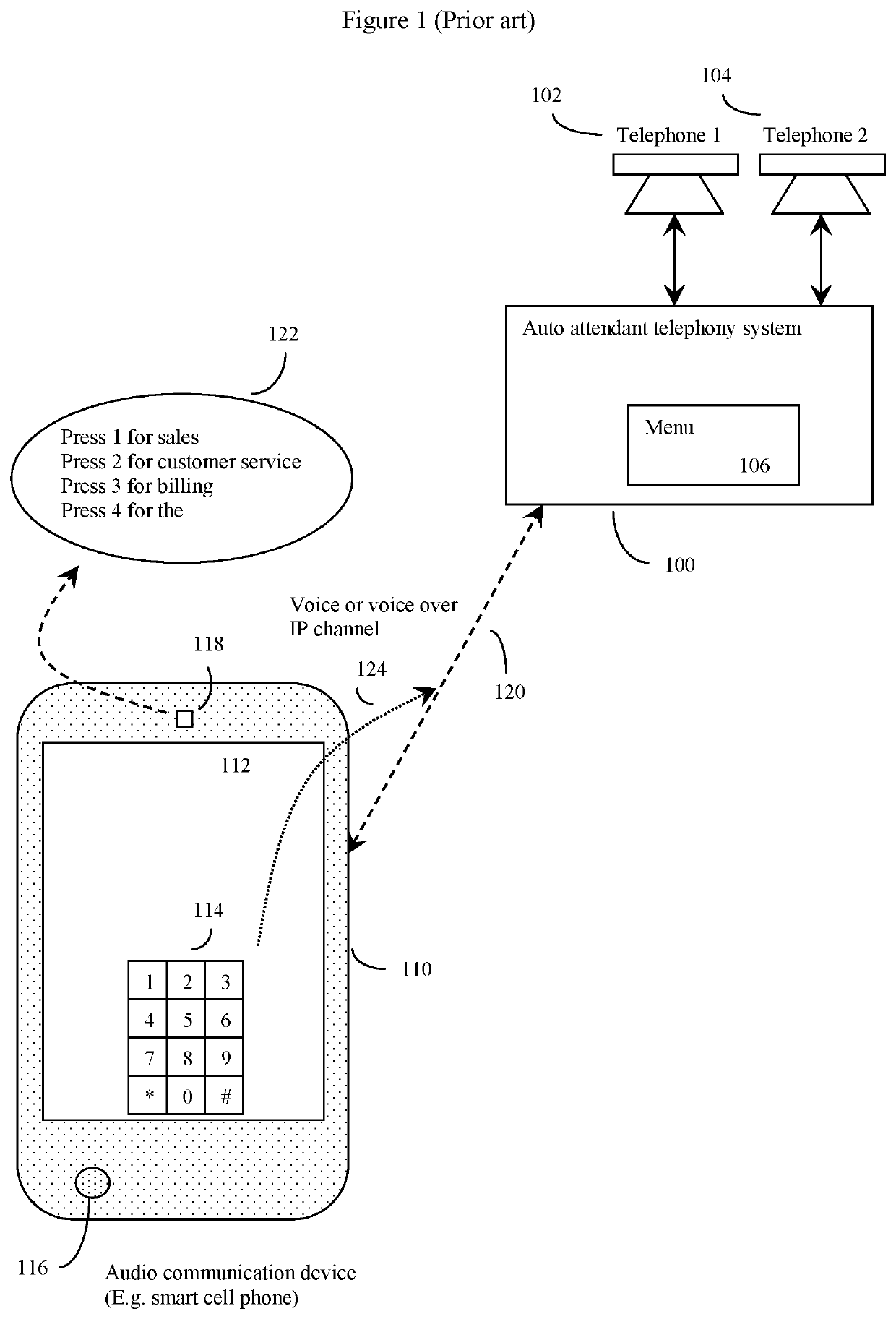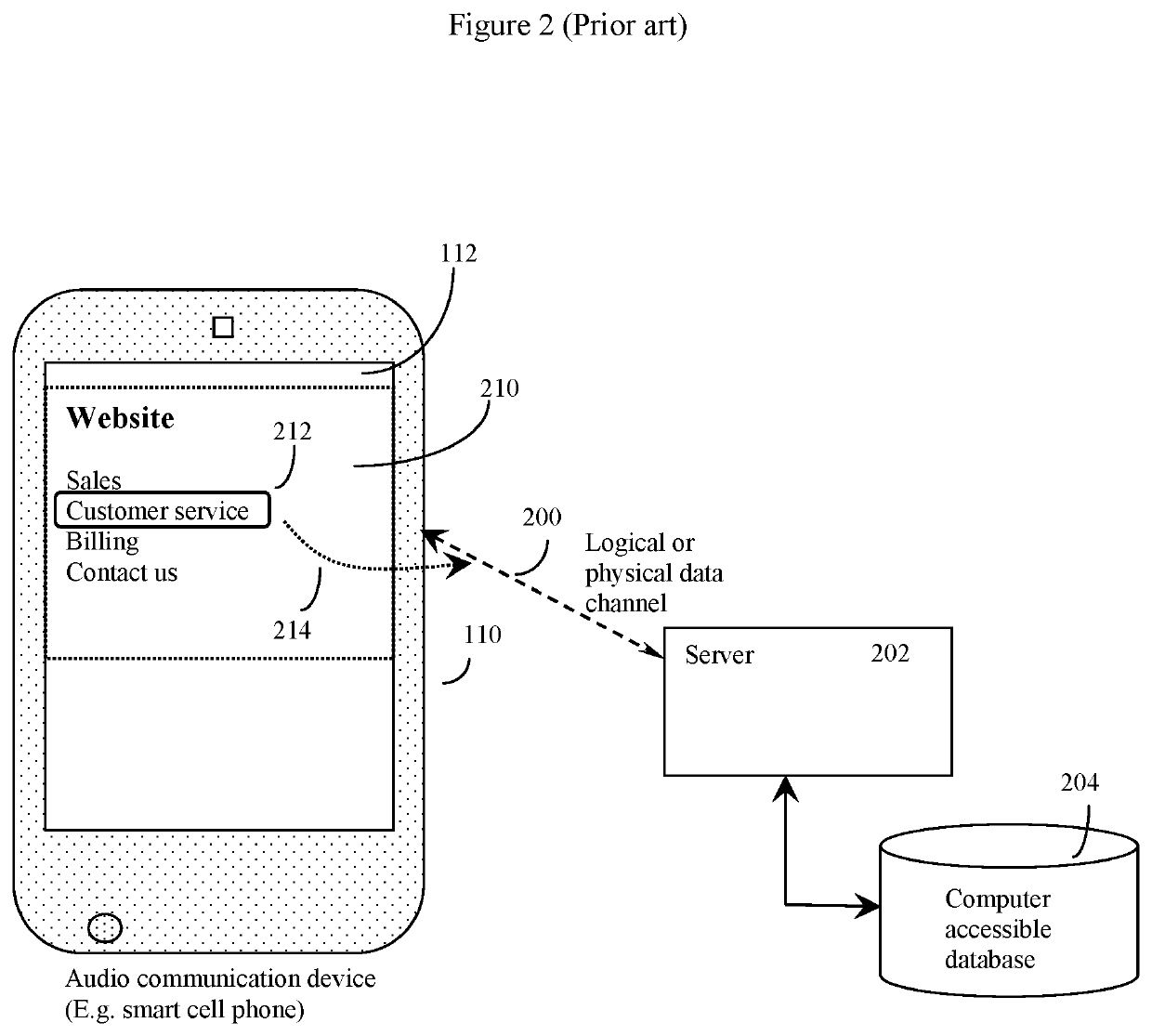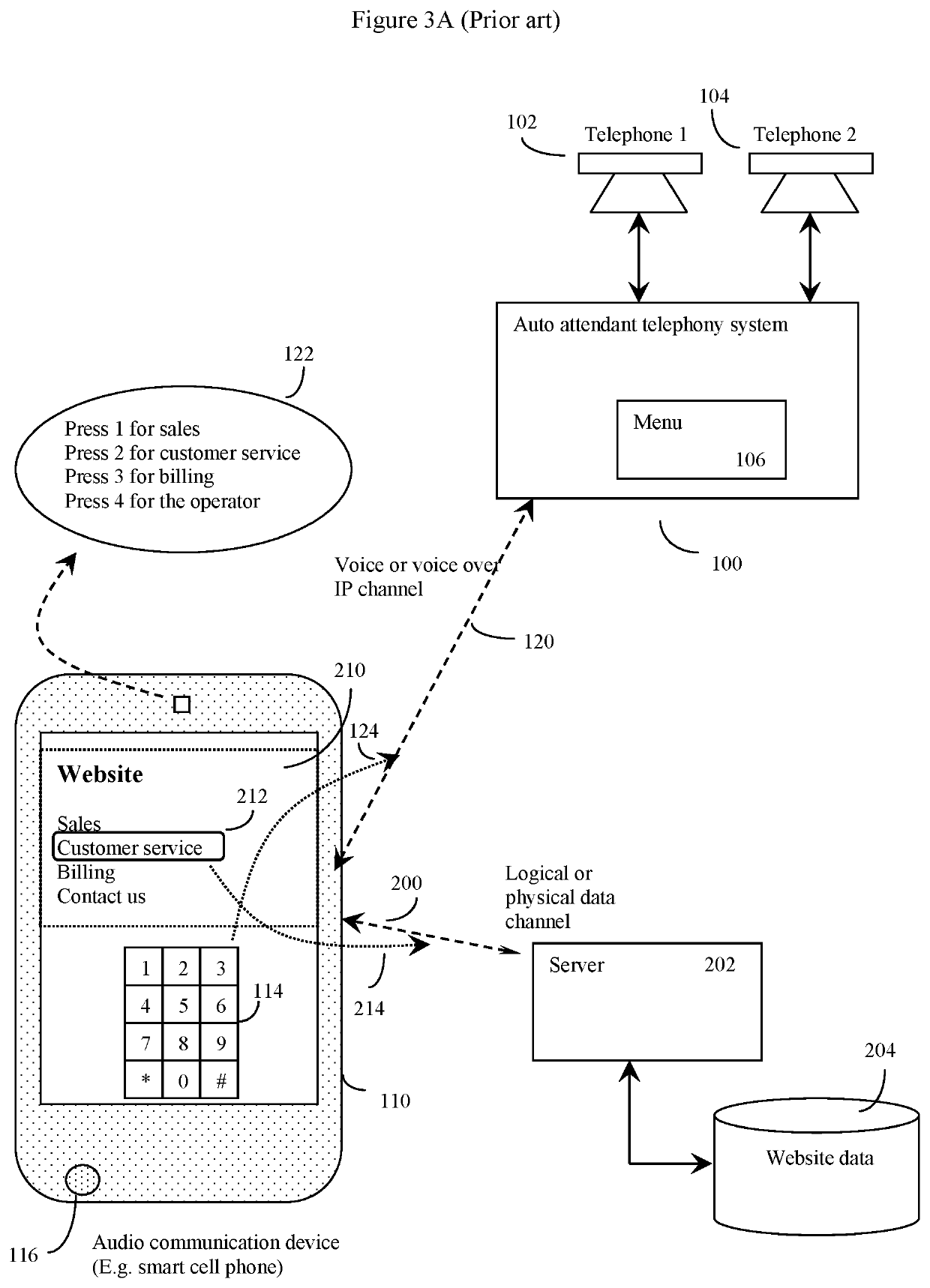Method and apparatus for data channel augmented voice telephony systems
a voice telephony and data channel technology, applied in the field of data channel assisted telephone systems and telecommunications technology, can solve the problems of limited success of visual ivr systems, high cost and logistical demands, and achieve the effect of quick selection of the appropriate menu respons
- Summary
- Abstract
- Description
- Claims
- Application Information
AI Technical Summary
Benefits of technology
Problems solved by technology
Method used
Image
Examples
Embodiment Construction
[0050]For more a detailed discussion of the call termination option embodiment of the invention, please refer to FIGS. 8-9 and the associated discussion, which are provided later in this discussion. First however, other aspects of the invention will be discussed.
[0051]As previously discussed, prior art AA / IVR systems, although increasingly flexible and complex in terms of the provider's ability to craft a customized response menu for a call originator, are still primarily limited to only voice based responses. This makes navigating such menus both complicated and slow. Further, because it is difficult for users to remember complex spoken menus, the operator of the AA / IVR system must limit the complexity and number of options provided on the menus.
[0052]At the same time, there are a growing number of phones that now have one or more computer processors, memory, and large display screens with graphical user interfaces. These include smart cellular telephones, office Voice over IP (VoI...
PUM
 Login to View More
Login to View More Abstract
Description
Claims
Application Information
 Login to View More
Login to View More - R&D
- Intellectual Property
- Life Sciences
- Materials
- Tech Scout
- Unparalleled Data Quality
- Higher Quality Content
- 60% Fewer Hallucinations
Browse by: Latest US Patents, China's latest patents, Technical Efficacy Thesaurus, Application Domain, Technology Topic, Popular Technical Reports.
© 2025 PatSnap. All rights reserved.Legal|Privacy policy|Modern Slavery Act Transparency Statement|Sitemap|About US| Contact US: help@patsnap.com



